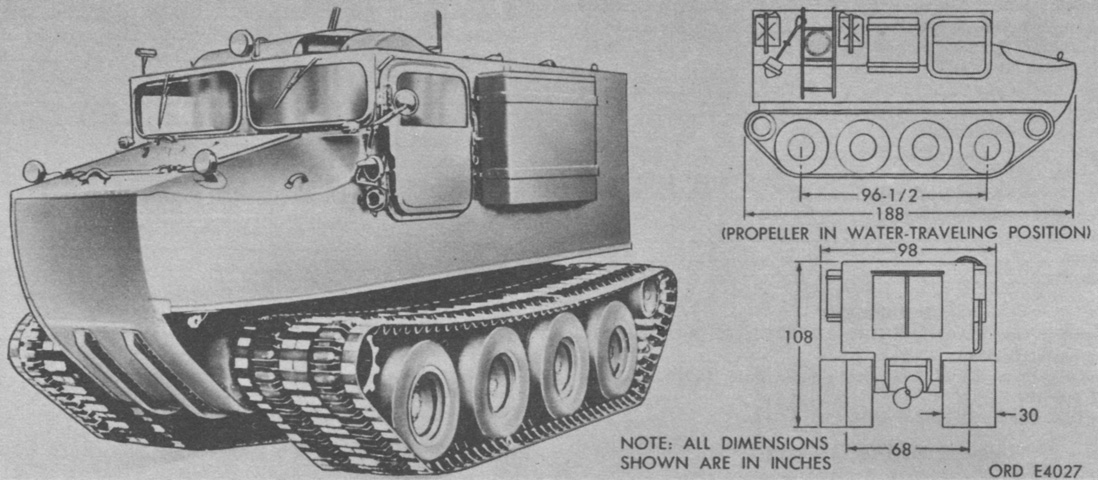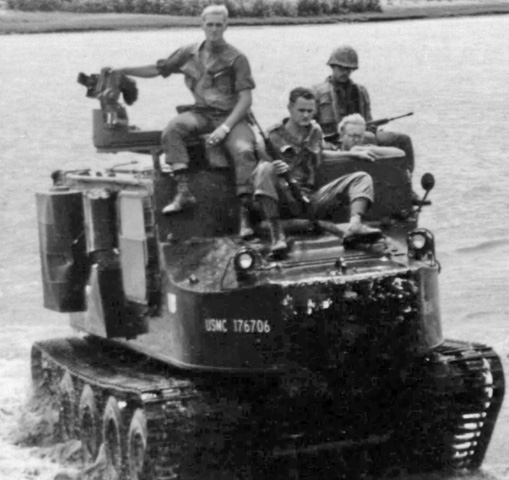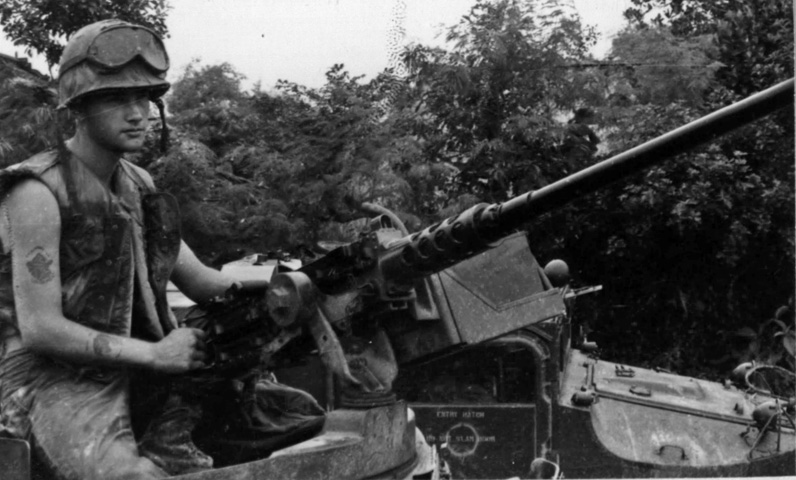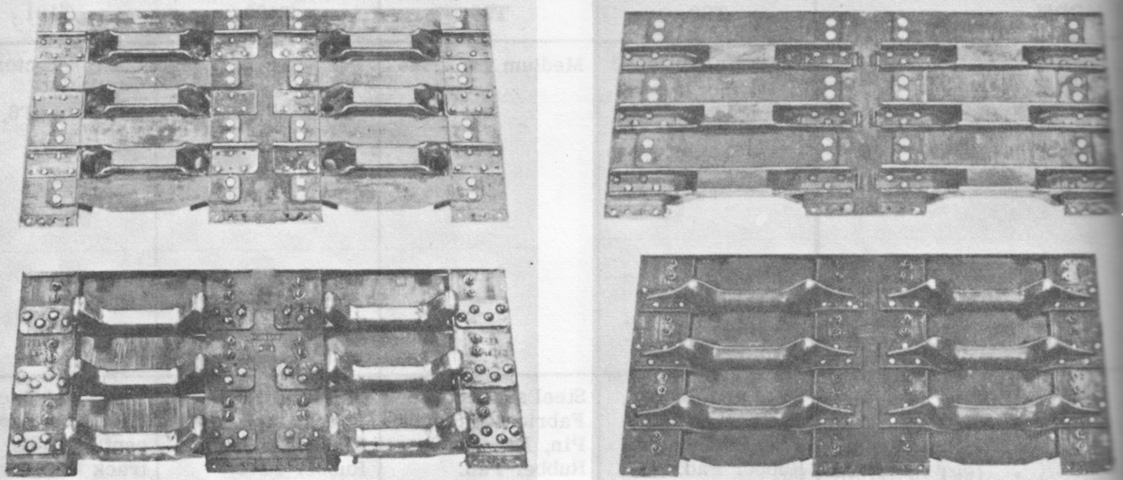
Amphibious Cargo Carrier M76 Otter.

The boat like shape of the M76's hull is immediately apparent, as are the large pneumatic tires on the road wheels. This early-production example has the rectangular fuel cells immediately behind the drivers' side doors. The fuel cells were later moved toward the rear of the vehicle, and as can be seen in the sketch this necessarily led to relocation of the fuel and water cans, pioneer kit, and observation window. The drivers each had a domed roof hatch as well as a side door, and, in addition to the rear doors, a large two-piece, outward-opening door was found in the roof over the cargo compartment. (Picture from TM 9-500 C3 Data Sheets for Ordnance Type Materiel.)

The cargo compartment and driver's roof hatches are open on this vehicle, and the sprocket teeth can be seen engaging the track crossbars. The condition of the rear of the carrier is testament to the capability of the wide tracks to power the vehicle through marginal terrain. Here, Cpl A.M. Carvella is seen lubricating components at the Camp Big John outpost. Five M76s operated with the 1st Marine Regiment, 3rd Marine Division, providing medical evacuation and resupply services to marines conducting patrols west of Cua Vet. (Picture taken 29 June 1968 by PFC Phil DeFazio; available from the National Archives.)

This is a later-production carrier, with the fuel cells relocated toward the rear of the hull and the fuel and water cans moved to just behind the assistant driver's door. Note the damage to the fuel cell on the right side of the vehicle. The front windows are covered, and the driver is operating the controls with his head out of his roof hatch. The .50cal machine gun ring mount is above the assistant driver's roof hatch, although the gun itself is not present. (Picture taken 29 June 1968 by PFC Phil DeFazio; available from the National Archives.)

The machine gun is mounted here, manned by LCpl Jay A. Shumaker of Second Platoon, Co. C, 1/5 Marines, 1st MarDiv. A second M76 is in the background. (Picture taken 18 October 1967 by Sgt Dickman; available from the National Archives.)

The rear doors are open on this early carrier, and the original locations of the pioneer kit and fuel and water cans are visible on the right side of the hull. An exhaust pipe reaches up from the engine compartment through the roof toward the front of the vehicle. Co. H, 2/4 Marines, 3rd MarDiv was using this M76 to deliver C-rations and other supplies to citizens during a Medcap north of Cua Vet. (Picture taken 25 April 1968 by PFC Thurston Bechtel; available from the National Archives.)

Outer and inner views are provided for T102 track on the left and T102E1 on the right. The differences in the stamped versus welded crossbars can be seen, as well as their "Siamese" construction from rubber and steel cable band sections connected by the crossbars. The grousers were ⅝" (1.59cm) high, and each section of T102 weighed 110lb (50kg) while the T102E1 dropped the weight to 77.2lb (35.0kg) per section. (Picture from Track Data.)